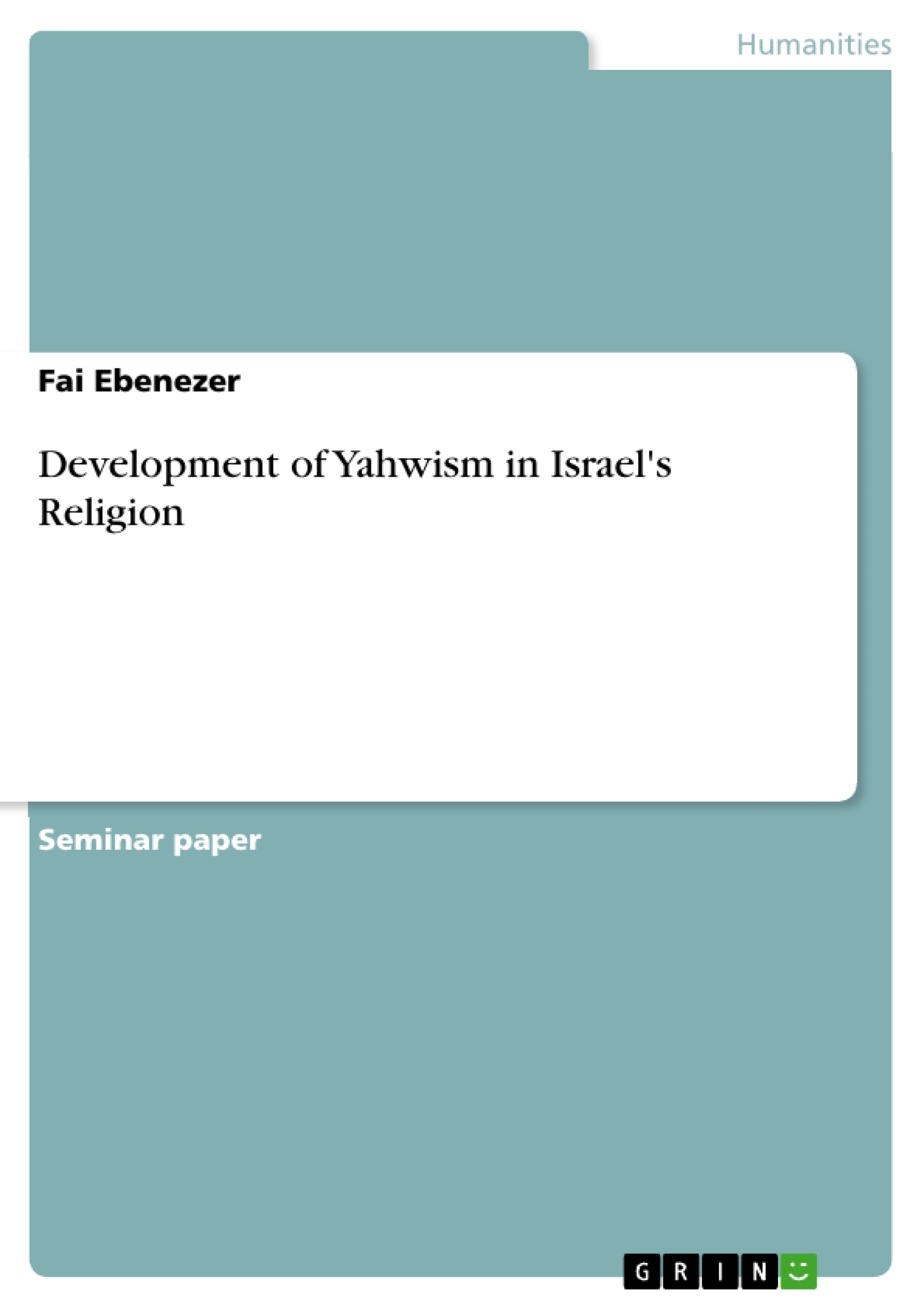This study was analytic in nature. The researcher found out that Israel never had a stable religion bit it metamorphosed as they journeyed to the promise land .
The Israelites are a set of people that are so passionate about their religion. It is interwoven with other factors of their life, for they are inseparable from their religion. There is no such word as "religion" to someone from the Near East because there is no dichotomy between sacred and secular. Suffice to assert that it is a futile attempt to separate an average Israelite from their religion. In their religion, the priestly community exercised a fundamental role in maintaining the order of life in the community and were the ones who stood at the center of religious life.
The history of Israel reveals that their religion was a metamorphosing one and an essential source for its knowledge is the Old Testament. The religion began with the Patriarchs who understood God as El and gave him different names due to their various experiences; for instance, in Genesis 17:1, God revealed Himself to Abram as El Shaddai before Yahwism which is the main focus of this paper became a national religion. Helmer Ringgren avers that the basic tenet of this Israelite religion is "hear, O Israel our God is One...” In this paper, this researcher shall discuss the commencement of Yahwism, its development in Israel's religion, specifically looking at the Pre-Mosaic period, the Mosaic Period, and the Post-Mosaic Period.
Table of Contents
- INTRODUCTION
- THE COMMENCEMENT OF YAHWISM
- YAHWISM DURING THE PRE-MOSAIC PERIOD
- YAHWISM DURING THE MOSAIC PERIOD
- YAHWISM DURING THE POST-MOSAIC PERIOD
- CONCLUSION
Objectives and Key Themes
This paper explores the development of Yahwism, the worship of Yahweh, within the context of Israelite religion. It examines the origins and evolution of this central belief system, focusing on the pre-Mosaic period, the Mosaic period, and the post-Mosaic period. The paper aims to provide a comprehensive overview of Yahwism's development as a national religion, highlighting its key features and transformations over time.
- The emergence of Yahwism as a national religion
- The role of the patriarchs in the development of Yahwism
- The impact of Moses and the Mosaic Covenant on Yahwism
- The evolution of Yahwism during the post-Mosaic period
- The relationship between Yahwism and other religious practices in ancient Israel
Chapter Summaries
- Introduction: This chapter introduces the concept of Yahwism and its significance within Israelite religion. It highlights the importance of understanding the historical context of Yahwism's development, emphasizing the role of the priestly community and the intertwining of religion with everyday life.
- The Commencement of Yahwism: This chapter examines the origins of Yahwism, exploring various perspectives on its beginnings. It discusses the potential pre-patriarchal origins and the role of Moses in establishing Yahwism as a central element of Israelite worship.
- Yahwism During the Pre-Mosaic Period: This chapter analyzes the development of Yahwism during the period of the patriarchs. It examines the evidence for Yahweh's presence in the lives of Abraham, Isaac, and Jacob, considering different interpretations of the biblical accounts. The chapter also explores the relationship between Yahweh and other divine names used by the patriarchs.
- Yahwism During the Mosaic Period: This chapter focuses on the impact of Moses and the Mosaic Covenant on Yahwism. It examines the significance of the revelation at Mount Sinai and the establishment of a formal covenant between Yahweh and the Israelites. This chapter highlights the defining elements of Yahwism as established during this period.
Keywords
Yahwism, Yahweh, Israelite religion, patriarchs, Moses, Mosaic Covenant, ancient Israel, Old Testament, divine names, LORD OF HOSTS, Ark of the Covenant, pre-Mosaic period, Mosaic period, post-Mosaic period.
- Arbeit zitieren
- Fai Ebenezer (Autor:in), 2022, Development of Yahwism in Israel's Religion, München, GRIN Verlag, https://www.grin.com/document/1191997



